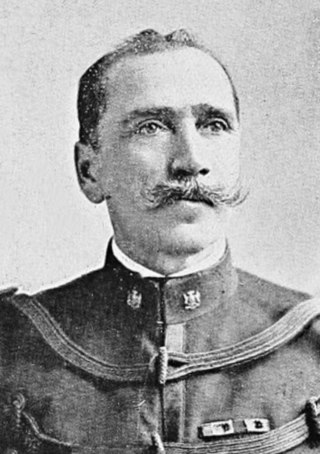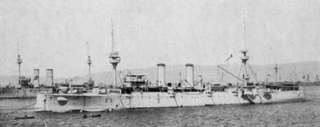
The Ludlow Massacre was a mass killing perpetrated by anti-striker militia during the Colorado Coalfield War. Soldiers from the Colorado National Guard and private guards employed by Colorado Fuel and Iron Company (CF&I) attacked a tent colony of roughly 1,200 striking coal miners and their families in Ludlow, Colorado, on April 20, 1914. Approximately 21 people, including miners' wives and children, were killed. John D. Rockefeller Jr., a part-owner of CF&I who had recently appeared before a United States congressional hearing on the strikes, was widely blamed for having orchestrated the massacre.

Arturo Fortunato Alessandri Palma was a Chilean political figure and reformer who served thrice as president of Chile, first from 1920 to 1924, then from March to October 1925, and finally from 1932 to 1938.

The Herrin massacre took place on June 21–22, 1922 in Herrin, Illinois, in a coal mining area during a nationwide strike by the United Mineworkers of America (UMWA). Although the owner of the mine originally agreed with the union to observe the strike, when the price of coal went up, he hired non-union workers to produce and ship out coal, as he had high debt in start-up costs.

The Cripple Creek miners' strike of 1894 was a five-month strike by the Western Federation of Miners (WFM) in Cripple Creek, Colorado, United States. It resulted in a victory for the union and was followed in 1903 by the Colorado Labor Wars. It is notable for being the only time in United States history when a state militia was called out in support of striking workers.

The Chilean coup d'état of 1925 took place on January 23, 1925, when the Chilean military overthrew the September Junta. Led by Colonel Marmaduque Grove, the troops arrested the Junta's President, General Luis Altamirano, and then handed the power to General Pedro Dartnell as interim President. The organizers of the coup hoped to recall former president Arturo Alessandri Palma, who had been forced into exile after the September Junta's coming to power. However, General Dartnell ultimately refused to rule alone and formed the January Junta a few days later, handing power to Emilio Bello Codesido. Alessandri only returned from exile on March 20, 1925, putting an end to the junta.

The Parliamentary Era in Chile began in 1891, at the end of the Civil War, and spanned until 1925 and the establishment of the 1925 Constitution. Also called "pseudo-parliamentary" period or "Parliamentary Republic", this period was thus named because it established a quasi-parliamentary system based on the interpretation of the 1833 Constitution following the defeat of President José Manuel Balmaceda during the Civil War. As opposed to a "true parliamentary" system, the executive was not subject to the legislative power but checks and balances of executive over the legislature were weakened. The President remained the head of state but its powers and control of the government were reduced. The Parliamentary Republic lasted until the 1925 Constitution drafted by President Arturo Alessandri and his minister José Maza. The new Constitution created a presidential system, which lasted, with several modifications, until the 1973 coup d'état.

The Presidential Republic is the period in the history of Chile spanning from the approval of the 1925 Constitution on 18 September 1925, under the government of Arturo Alessandri Palma, to the fall of the Popular Unity government headed by the President Salvador Allende on 11 September 1973. The period spans the same time as the "Development inwards" period in Chilean economic history.

Letters from Marusia is a 1975 Mexican film directed by Chilean filmmaker Miguel Littín. It was nominated for the Academy Award for Best Foreign Language Film. It was also entered into the 1976 Cannes Film Festival. The film is based on a Patricio Manns novel (1974) inspired by the Marusia massacre of 1925.

The Santa María School massacre was a massacre of striking workers, mostly saltpeter works (nitrate) miners, along with wives and children, committed by the Chilean Army in Iquique, Chile, on December 21, 1907. The number of victims is undetermined but is estimated to be over 2,000. The massacre occurred during the peak of the nitrate mining era, which coincided with the Parliamentary Period in Chilean political history (1891–1925). With the massacre and an ensuing reign of terror, not only was the strike broken, but the workers' movement was thrown into limbo for over a decade. For decades afterwards, there was official suppression of knowledge of the incident, but in 2007 the government conducted a highly publicized commemoration of its centenary, including an official national day of mourning and the reinterment of the victims' remains.

Roberto Silva Renard was a Chilean military and political figure who served in the War of the Pacific and the 1891 Chilean Civil War. He is mostly remembered as the military chief that carried out the Santa María of Iquique School massacre in 1907, where 2000-3,500 striking saltpeter miners, along with their wives and children, were killed.

Anti-union violence is physical force intended to harm union officials, union organizers, union members, union sympathizers, or their families. It is most commonly used either during union organizing efforts, or during strikes. The aim most often is to prevent a union from forming, to destroy an existing union, or to reduce the effectiveness of a union or a particular strike action. If strikers prevent people or goods to enter or leave a workplace, violence may be used to allow people and goods to pass the picket line.

The Colorado Coalfield War was a major labor uprising in the southern and central Colorado Front Range between September 1913 and December 1914. Striking began in late summer 1913, organized by the United Mine Workers of America (UMWA) against the Rockefeller-owned Colorado Fuel and Iron (CF&I) after years of deadly working conditions and low pay. The strike was marred by targeted and indiscriminate attacks from both strikers and individuals hired by CF&I to defend its property. Fighting was focused in the southern coal-mining counties of Las Animas and Huerfano, where the Colorado and Southern railroad passed through Trinidad and Walsenburg. It followed the 1912 Northern Colorado Coalfield Strikes.

The protected cruiser Blanco Encalada was purchased by the Chilean Government for £333,500 during the Argentine–Chilean naval arms race. She was the second ship named Blanco Encalada..
The Chilean government has a long-standing history of using political violence against its own citizens. Violence has been used by the government against its people under three different styles of government: parliamentary, presidential and military rule. While Chile has remained stable in the long run, the country has been subjected to intense periods of state sponsored violence.

The Lercara Friddi massacre took place on Christmas-day 1893 in Lercara Friddi in the Province of Palermo (Sicily) during the Fasci Siciliani uprising. According to different sources either seven or eleven people were killed and many wounded.
Events in the year 1973 in Chile.
The following lists events that happened during 1971 in Chile.
When union violence has occurred, it has frequently been in the context of industrial unrest. Violence has ranged from isolated acts by individuals to wider campaigns of organised violence aimed at furthering union goals within an industrial dispute.
The San Juan massacre is the name given to an attack by the Bolivian military on miners of the Siglo XX-Catavi tin mining complex in Bolivia. The attack occurred on 24 June 1967, in the early hours of the traditional festival of the Night of San Juan which is a winter solstice festival in the Southern Hemisphere. The army was acting under the orders of President René Barrientos.












